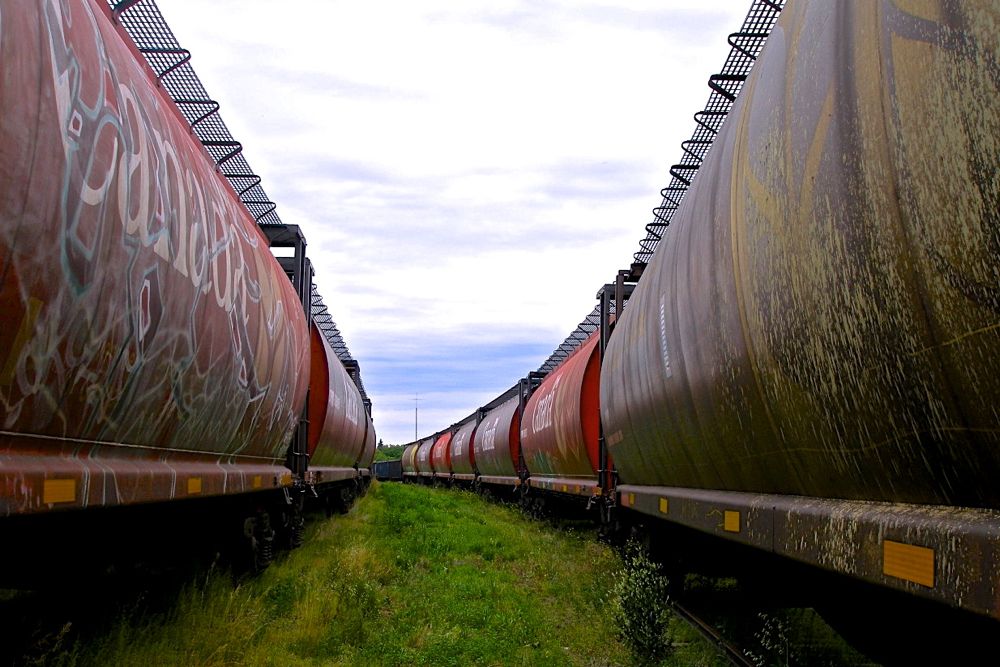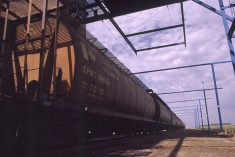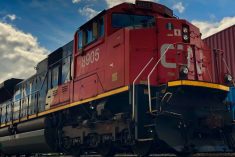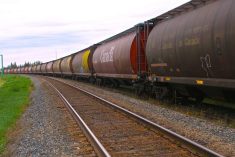Changes to federal rail transport rules that took effect in 2018 have put Canada’s big two railways well under their new Prairie grain revenue caps for the 2018-19 crop year.
The Canadian Transportation Agency on Monday announced Canadian National Railway (CN) booked 2018-19 Prairie grain revenue of $933,357,710, a figure $371,116 below what the CTA set as the company’s maximum revenue entitlement (MRE) for the year.
Canadian Pacific Railway’s (CP) grain revenue for the same crop year came in at $862,734,965, or $764,101 below its 2018-19 MRE, the agency said.
Read Also

Senft to step down as CEO of Seeds Canada
Barry Senft, the founding CEO of the five-year-old Seeds Canada organization is stepping down as of January 2026.
CN and CP had both taken in grain revenue overages of seven figures above their MREs during each of the previous four crop years.
In such cases, their revenue overages, plus penalties of five per cent, were required to be paid to the Western Grain Research Foundation, the mandated beneficiary. However, “no overage-related payouts or penalties were assessed” for 2018-19, the CTA said Monday.
The annual MREs for CN and CP are calculated by the CTA using a formula involving the actual tonnage of Prairie grain hauled and the average length of haul for each railway, along with the volume‑related composite price index (VRCPI), which the CTA sets no later than April 30 every year.
The VRCPI is an inflation index, reflecting forecast changes to the railways’ costs for labour, fuel, material and capital purchases in a given crop year.
In 2018-19, CN and CP moved a combined 46,060,737 tonnes of Prairie grain were moved under the MRE program, up 13.4 per cent from the previous crop year, for an average haul length of haul of 979 miles, up 2.7 per cent.
More specifically, CN moved 24,059,409 tonnes of Prairie grain with an average haul length of 1,023 miles; CP moved 22,001,328 tonnes, with an average haul length of 931 miles.
The MRE varies with the tonnage moved, so a railway can come in under its cap so long as it doesn’t charge more than the average rate per tonne as set by the first part of the MRE formula.
Each tolled separately
Changes to federal regulations under Bill C-49, the Transportation Modernization Act, had previously been expected to take effect starting with the 2019-20 crop year, if the bill didn’t get royal assent until after Aug. 1, 2018.
But when C-49 got royal assent on May 23, 2018, it included a provision requiring the CTA to recalculate the VRCPIs for CN and CP for 2018-19.
With C-49 in play, 2018-19 becomes the first crop year in which CN and CP each get separately calculated VRCPIs.
C-49 also adjusted the VRCPI to subtract costs associated with regulated interswitching activities and containerized grain movements, which now won’t be included as revenues toward the MRE.
C-49 also requires the CTA, in its calculations, to recognize certain costs CN and CP incur to obtain and maintain the hopper cars they use to handle Prairie grain. — Glacier FarmMedia Network















